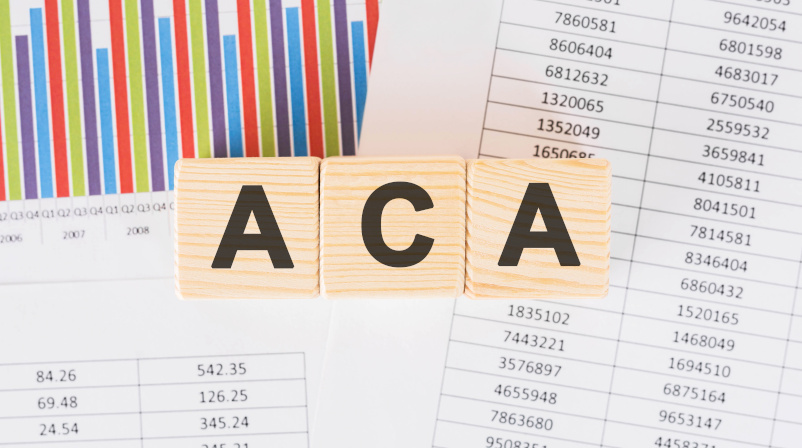![]()
The 2021 tax year is already halfway over. With the Biden administration ramping up legislation around the ACA and the IRS increasing its enforcement efforts, employers need to be sure they are leveraging resources to maximize their ACA Employer Mandate compliance efforts.
Under the ACA’s Employer Mandate, Applicable Large Employers (ALEs) are employers with 50 or more full-time employees and full-time equivalent employees. ALEs are required to:
- Offer Minimum Essential Coverage (MEC) to at least 95% of their full-time workforce (and their dependents) whereby such coverage meets Minimum Value (MV)
- Ensure that the coverage is deemed affordable based on one of the IRS-approved methods for calculating affordability
Failure to adhere to these two requirements could subject your organization to Internal Revenue Code (IRC) Section 4980H penalties.
Below we’ve identified the top five essential resources to help you comply with the ACA this year.
Resource 1: Get to Know the ACA’s Employer Mandate Guide
Organizations that are unfamiliar with their reporting requirements under the ACA’s Employer Mandate should review our Get to Know the ACA’s Employer Mandate Guide to learn their responsibilities for complying with the healthcare law for the 2021 tax year.
Our Get to the Know the ACA Employer’s Mandate Guide also provides context into the shifting political landscape surrounding the ACA. Since the law was first established in 2010 and reporting under the Employer Mandate was first required in 2015, the law has seen a significant amount of change. For more information, head to our Get to Know the ACA pillar page.
Resource 2: How to Respond to Letter 226J Infographic
If your organization receives a penalty notice for failing to comply with the ACA’s Employer Mandate, you know that responding to the notice can be a serious undertaking. Our How to Respond to IRS Letter 226J Infographic outlines the process for you and shows you how to respond.
Our Letter 226J infographic also dives into the different types of responses your organization may receive after responding to an IRS penalty notice. The agency issues different responses via Letters 227.
There are several different types of Letters 227 your organization can receive depending on whether or not the agency agrees with the materials you’ve provided in your Letter 226J response. For example, if the IRS acknowledges that the information you provided in your response to Letter 226J is correct and accepts it, the agency will issue a Letter 227K stating that you do not owe an employer shared responsibility payment. Check out the infographic to find out more on the Letter 226J penalty notice process.
Resource 3: Get to Know Letter 226J Guide
If you’re not familiar with IRS Letter 226J and don’t have a lot of confidence in your ACA compliance process, our Get to Know Letter 226J Guide explains the details around the penalty notice and what triggers cause an employer to receive one. In addition to the specifics around the Letter 226J penalty notice, our Get to Know Letter 226J Guide delves into the other types of penalties the IRS can issue to employers for failing to adhere to their ACA Employer Mandate responsibilities.
For example, the IRS can issue Letter 5005-A under IRC section 6721/6722 to ALEs that fail to furnish Forms 1095-C to their full-time employees or file Forms 1094-C and 1095-C with the IRS. These notices focus on the failure of ALEs to distribute Forms 1095-C to employees and to file Forms 1094-C and 1095-C with the tax agency by required deadlines. Check out the Get to Know Letter 226J Guide to learn more about these penalties and how best to avoid receiving them. If you’ve received any kind of IRS ACA penalty notice, contact us to discuss having it reduced or eliminated.
Resource 4: Safe Harbor Playbook for Calculating ACA Affordability
One area of the ACA that still creates challenges for health insurance brokers and HR professionals is determining affordability. With the affordability threshold changing annually and the stakes high for failing to offer affordable healthcare, we’re here to help. Download the Safe Harbor Playbook for Calculating ACA Affordability for real-world examples of the Rate of Pay, W-2, and Federal Poverty Line (FPL) affordability safe harbors. Learn how to apply these safe harbors to avoid ACA penalties under IRC 4980H(b).
In addition to providing examples of safe harbors in action, our IRS Affordability Safe Harbor post addresses the many plan nuances that can affect affordability for your employees, including health reimbursement arrangements (HRAs), opt-out payments, wellness plans, and flex credits. Implementing safe harbors when administering your health plan is one thing. Communicating this information to the IRS is another.
Resource 5: ACA FAQs
As ACA compliance experts, we understand that sometimes you have unique challenges. We’ve curated a list of frequently asked ACA questions and answered them. Check out our ACA FAQs to see how we’ve helped organizations like yours. From seasonal employee details as they pertain to the ACA’s Employer Mandate to who is required to file the Forms 1095-C and for what types of employees, our ACA FAQs have the answers to your organization’s questions.
Thank you for being an ACA Times subscriber. We hope that you will find this material to be helpful in 2021. We’re with you every step of the way to provide new and informative material to assist you in achieving ACA compliance.
If your organization needs assistance identifying ACA penalty exposure this year, contact us to get a free ACA compliance score.







